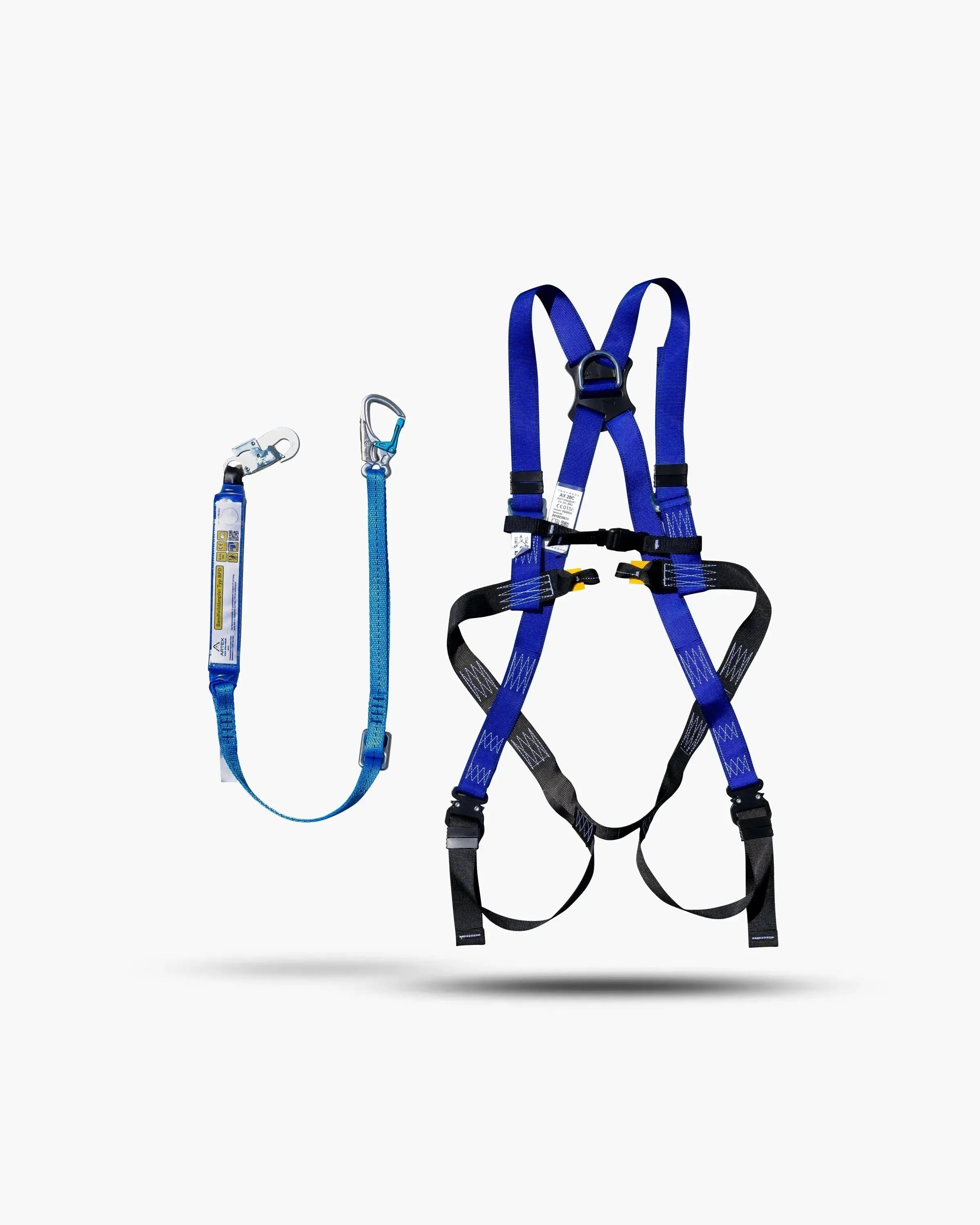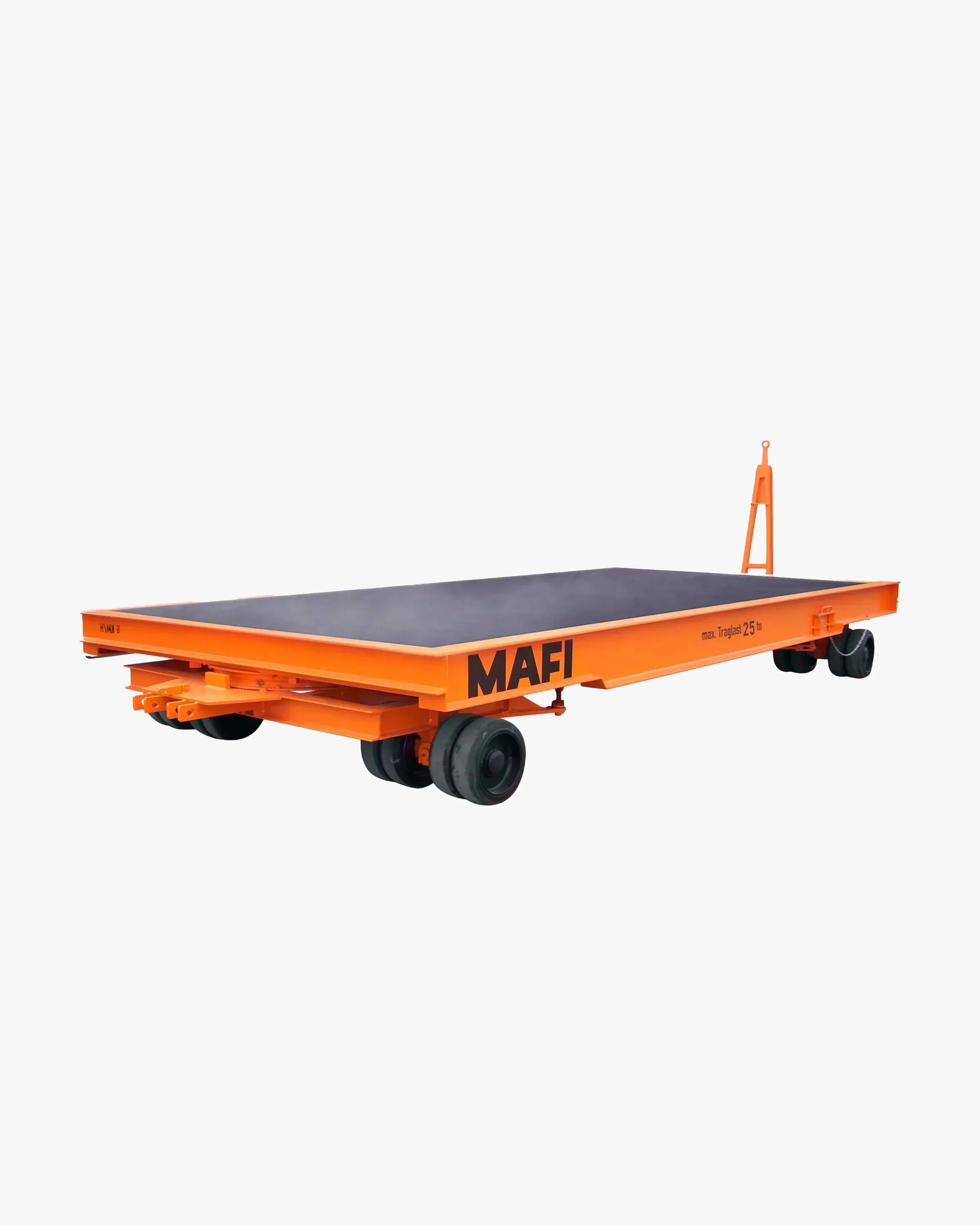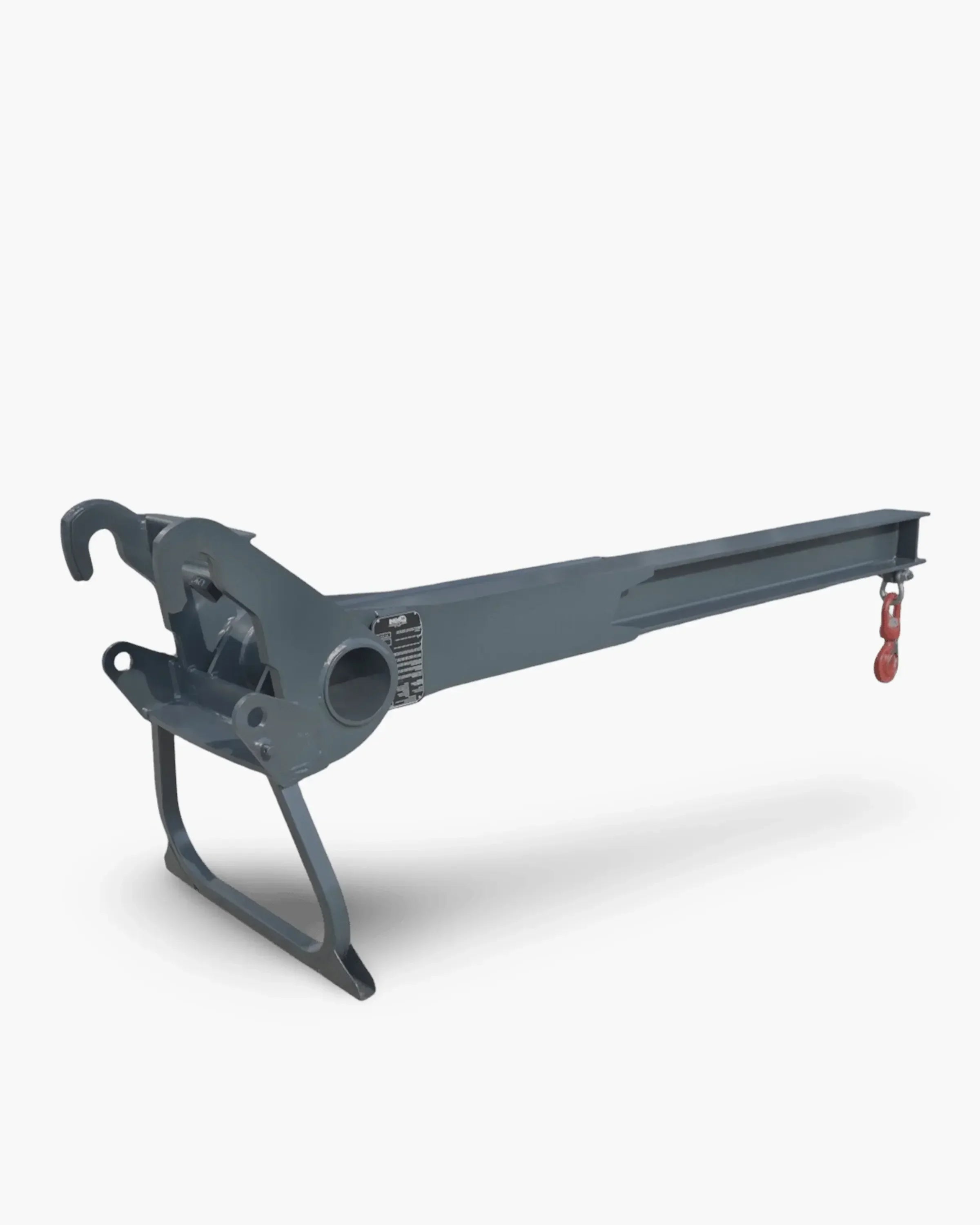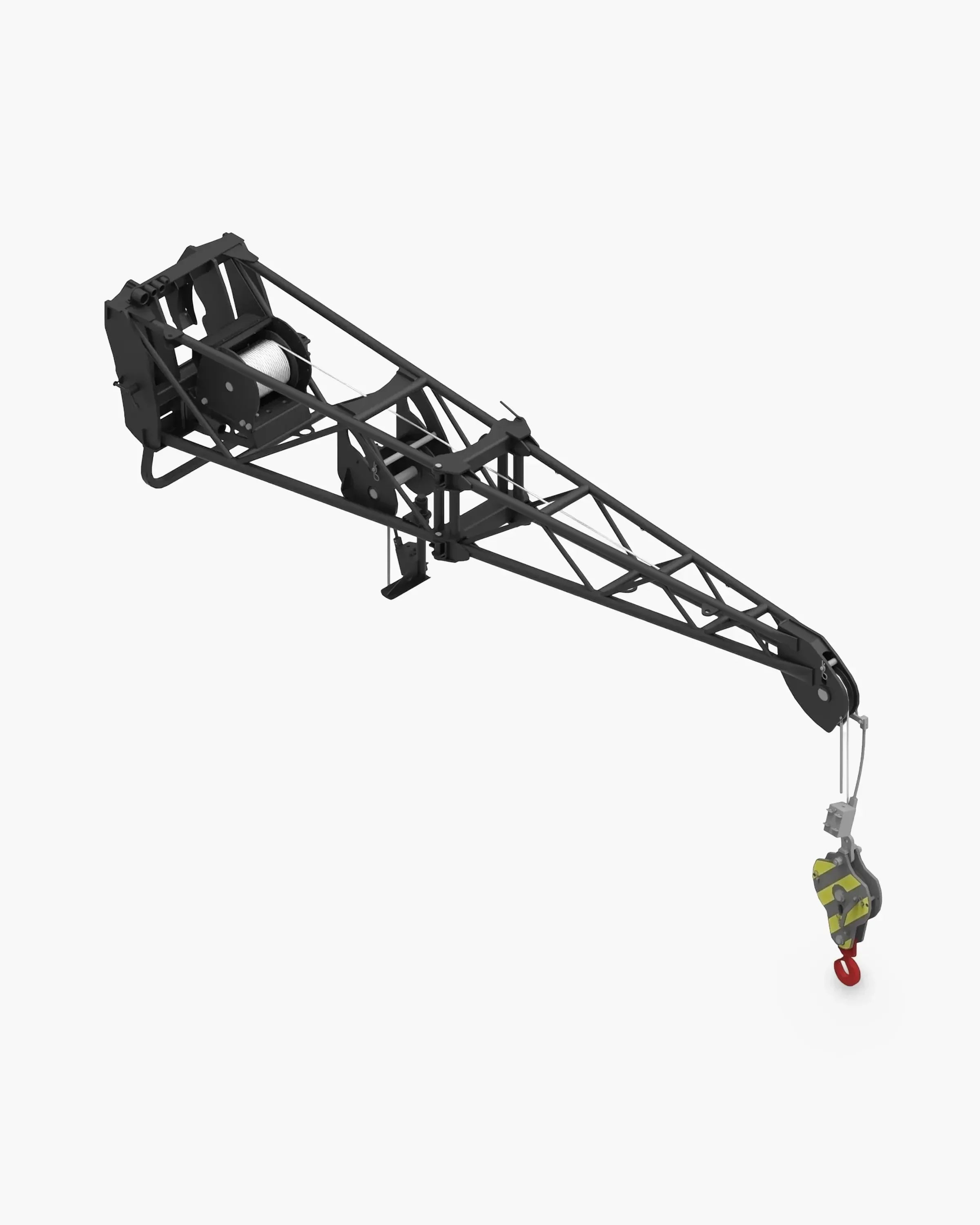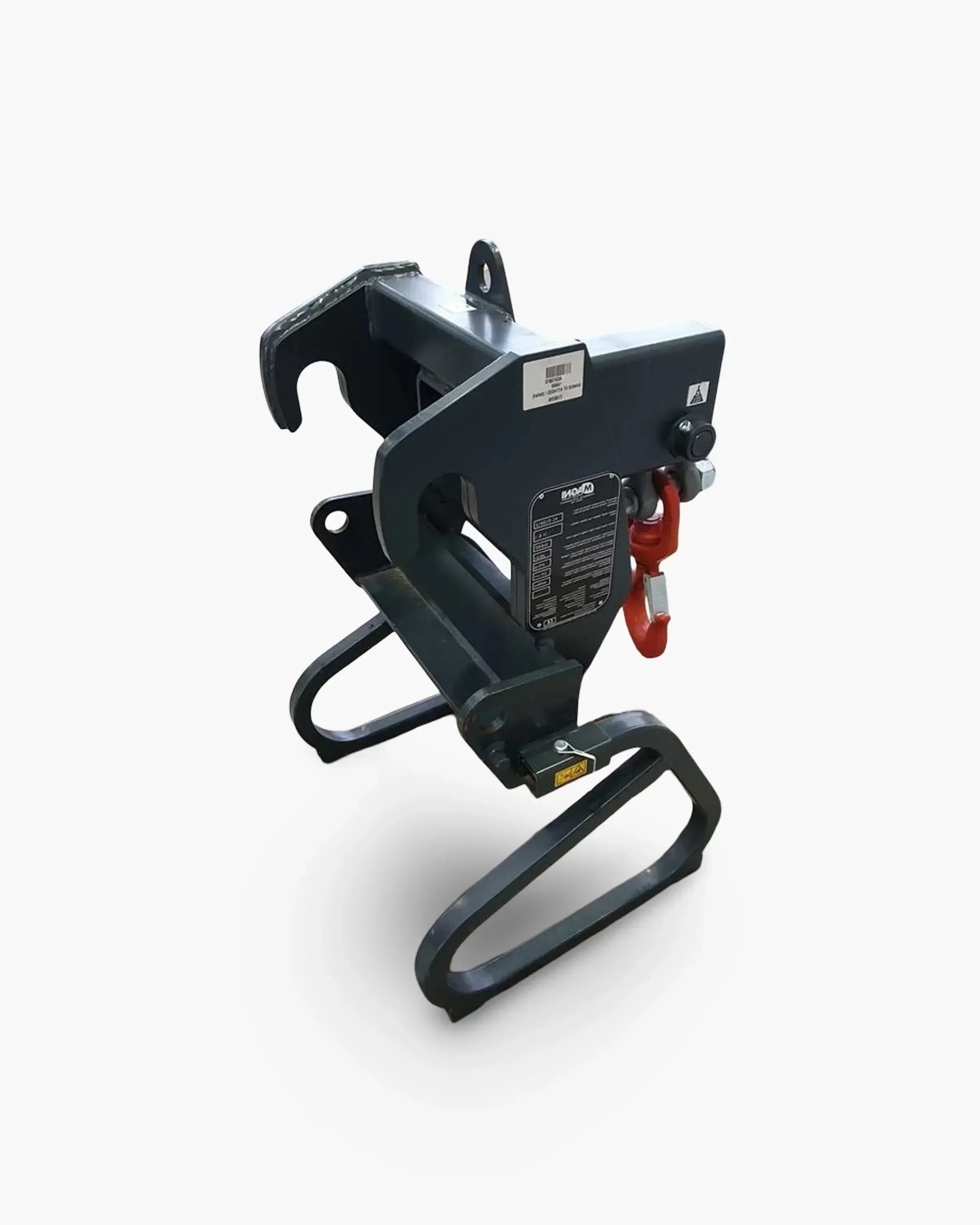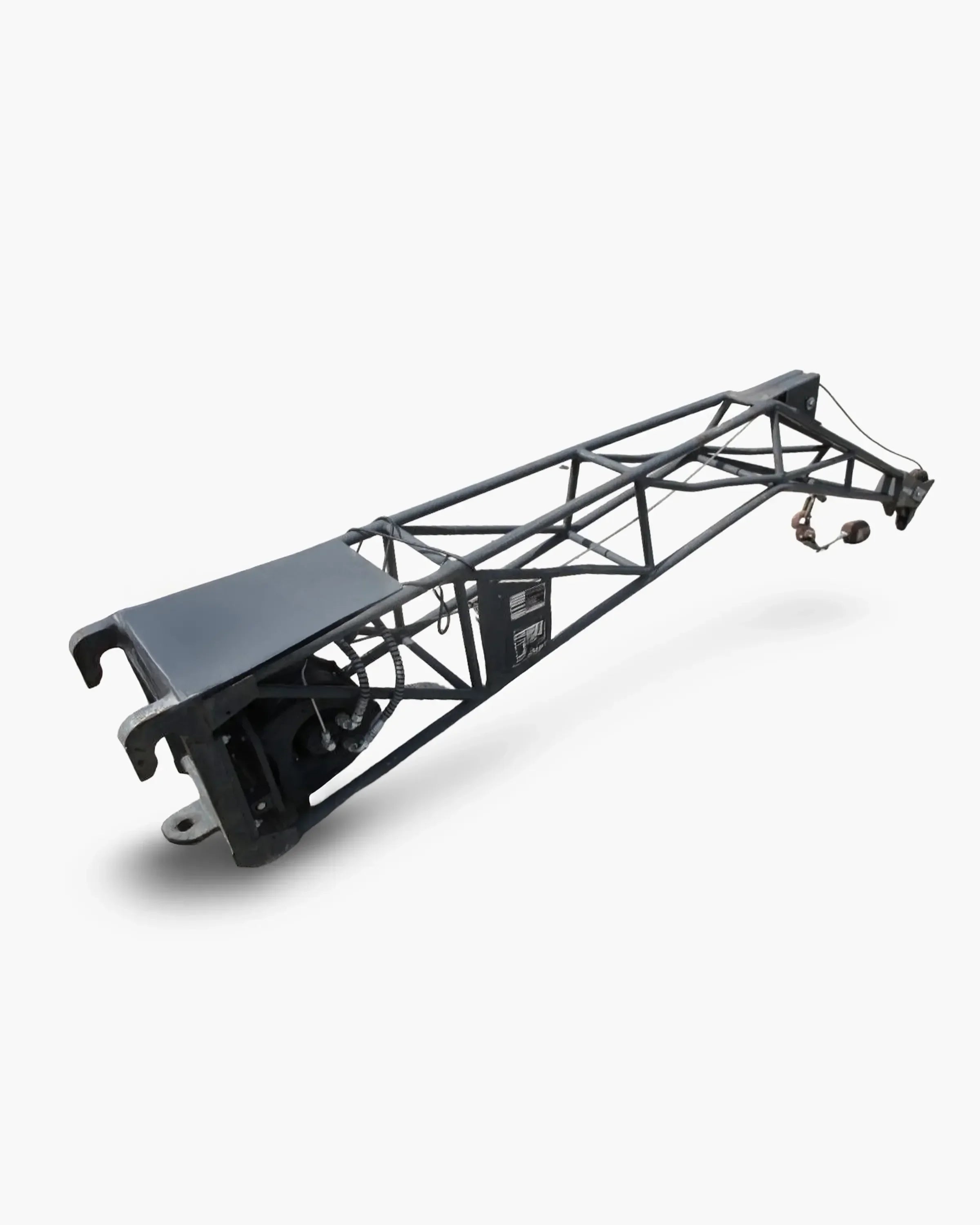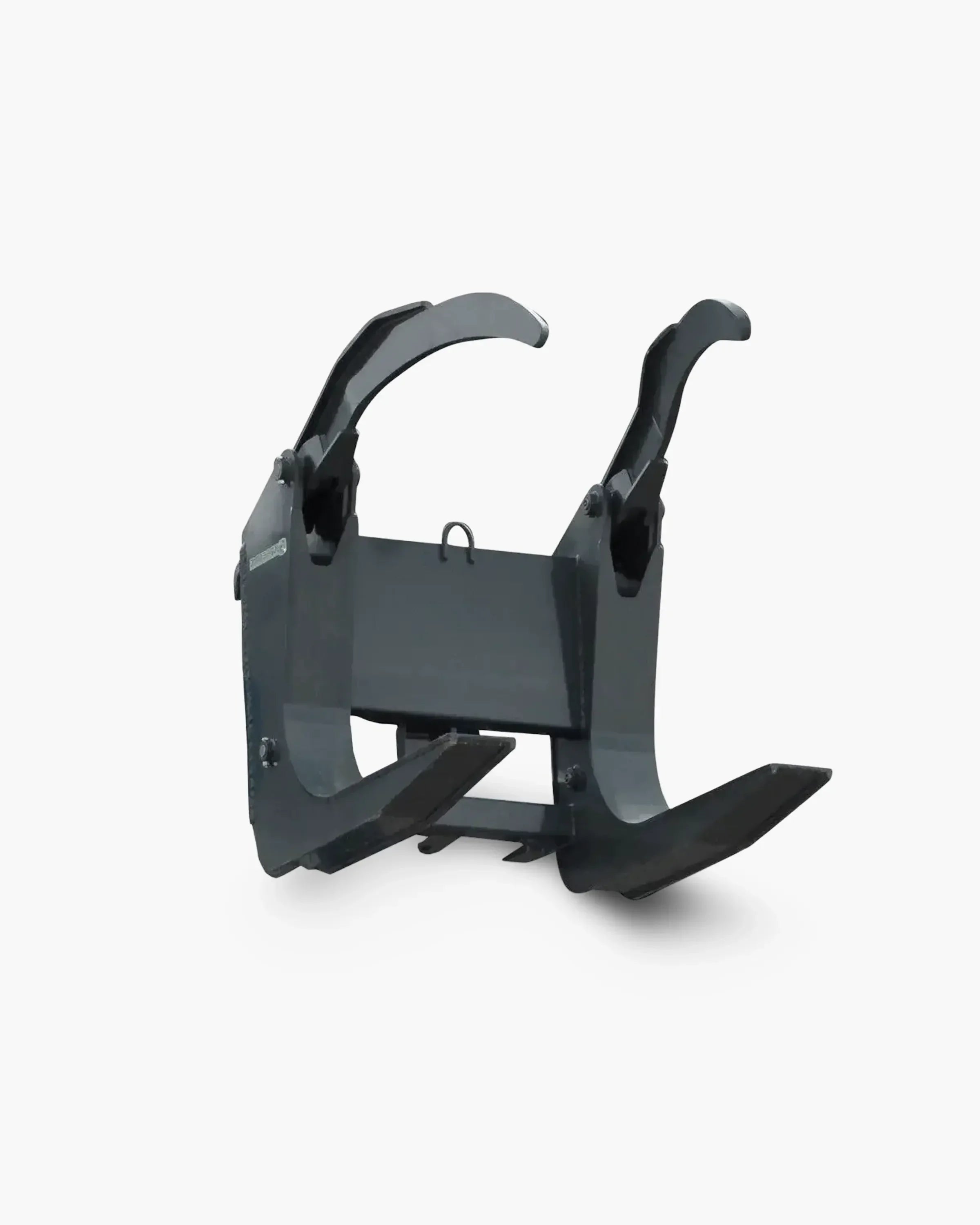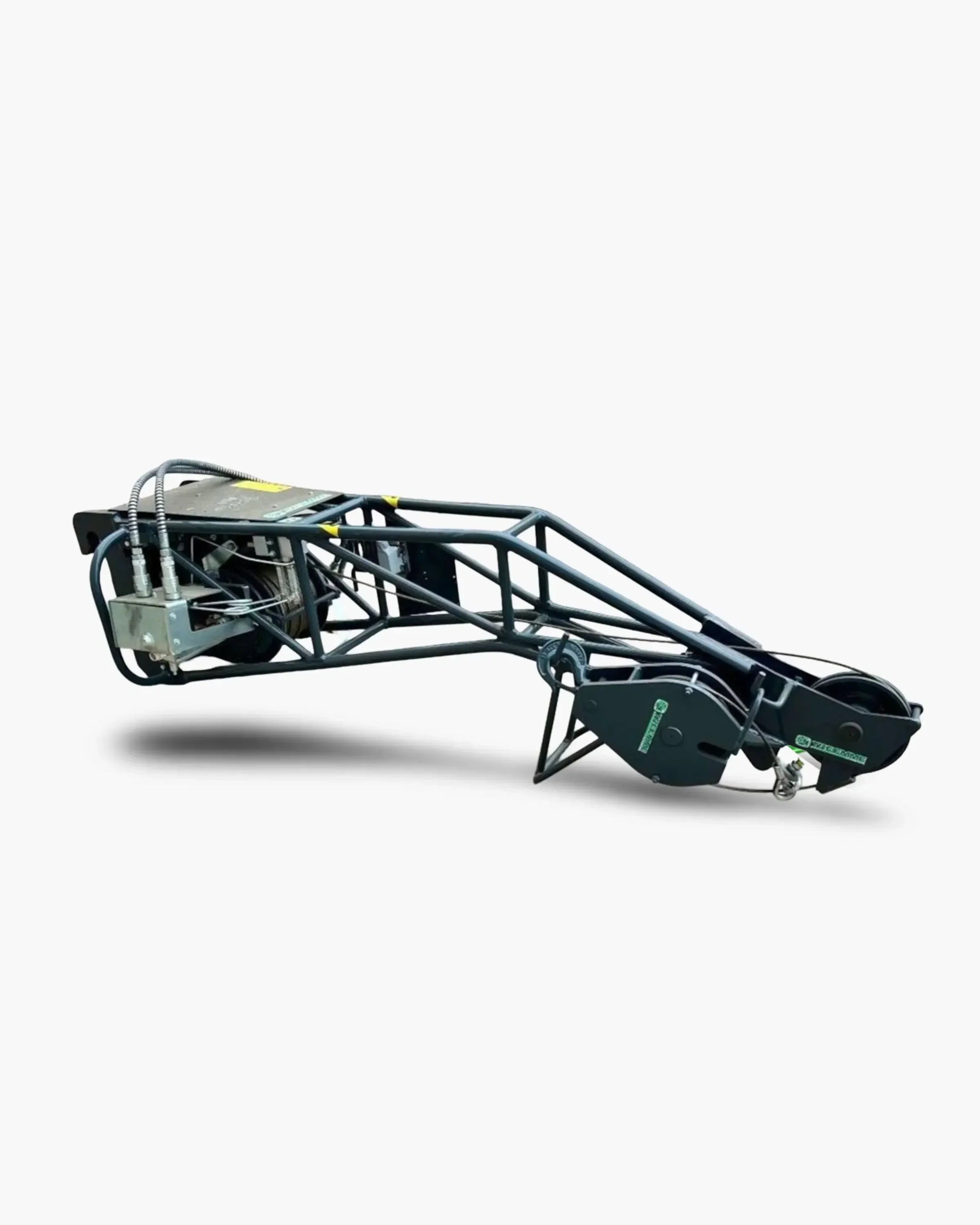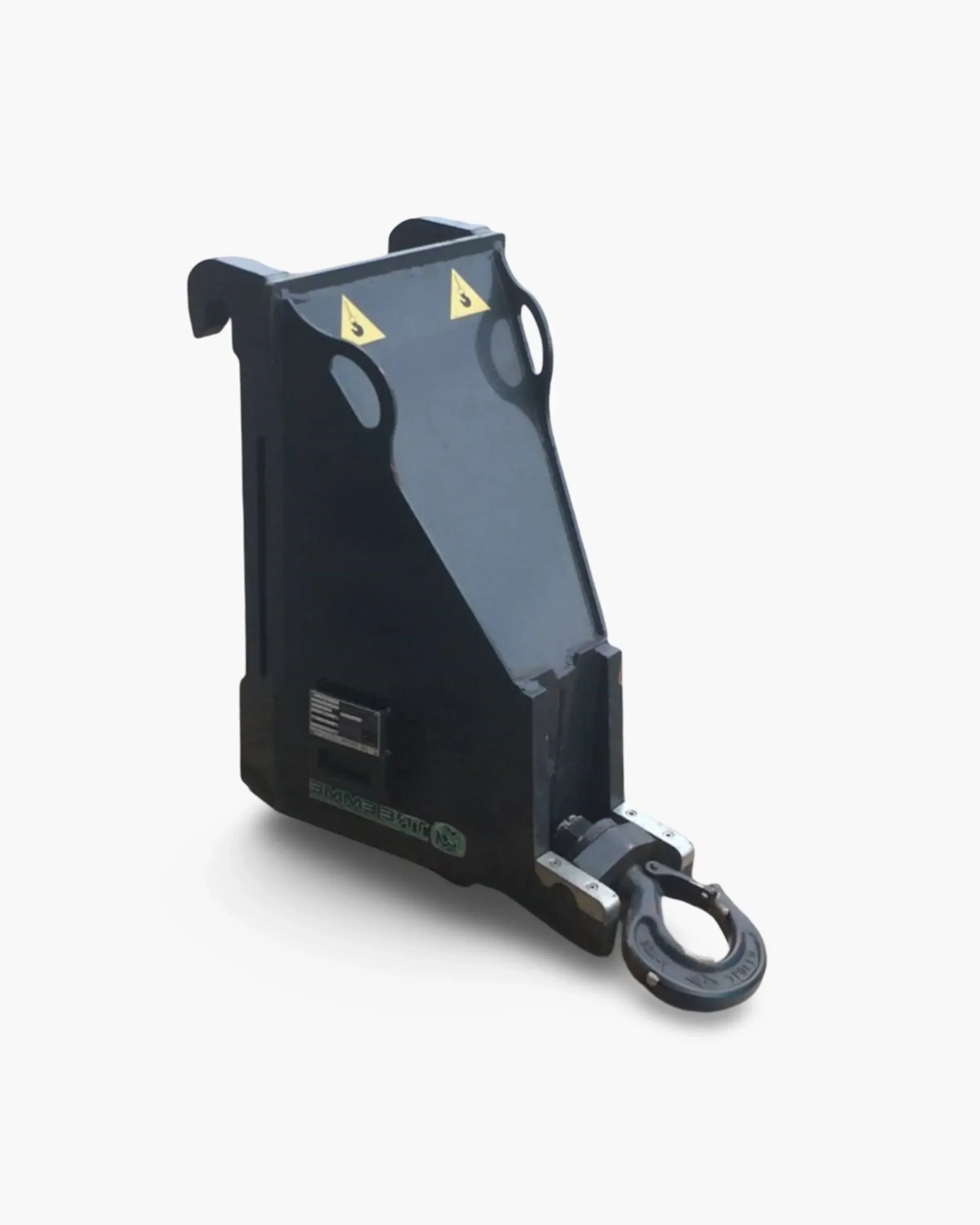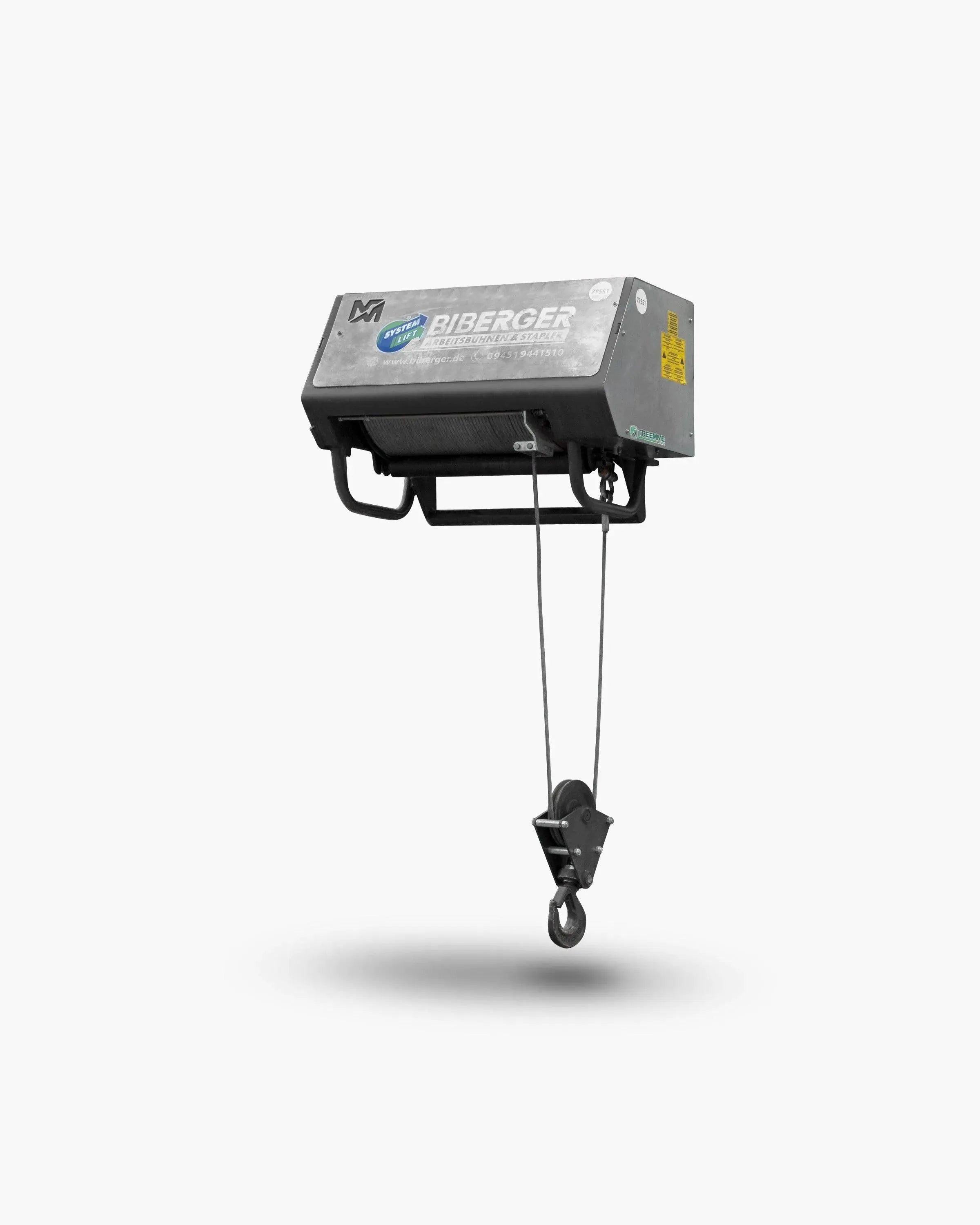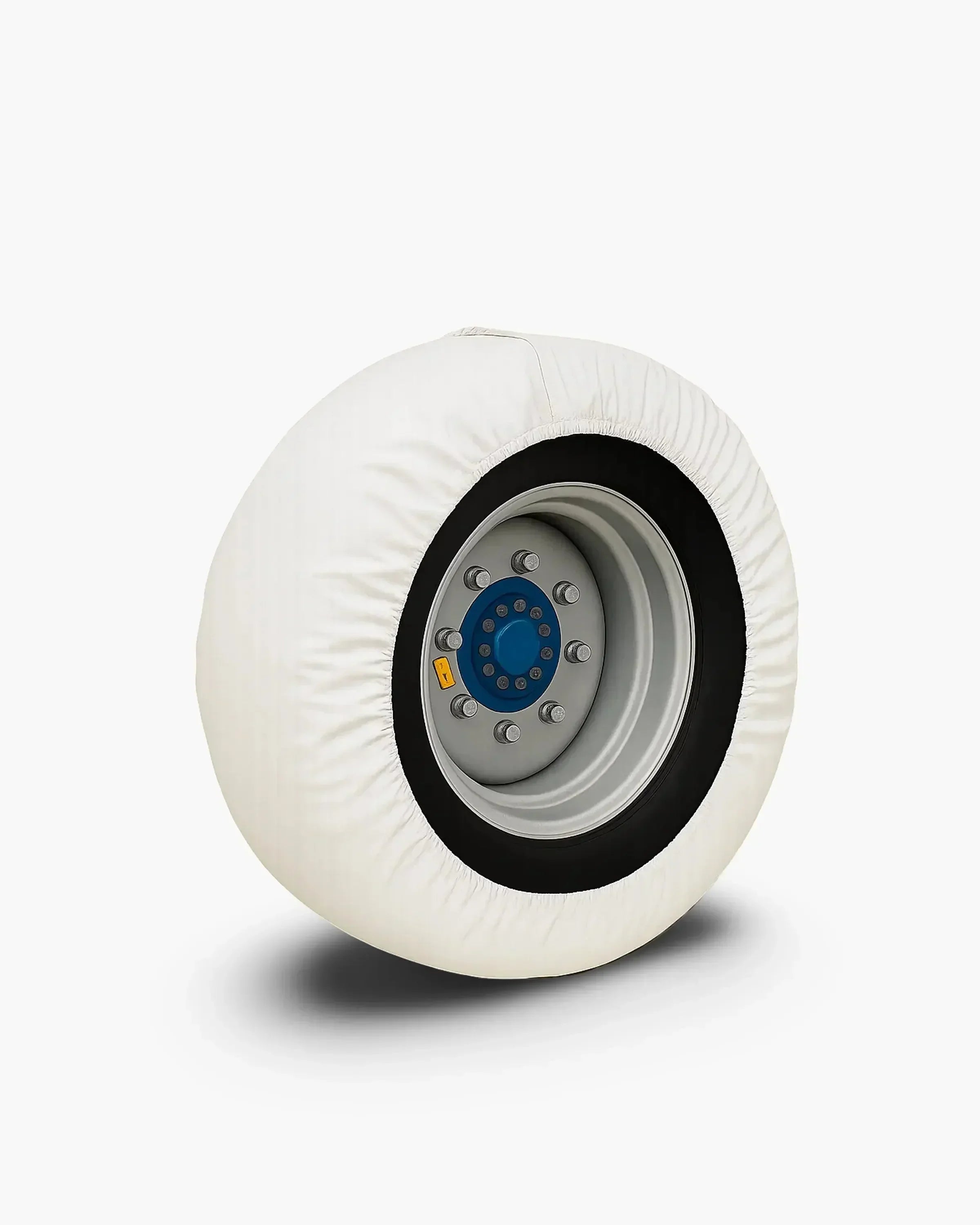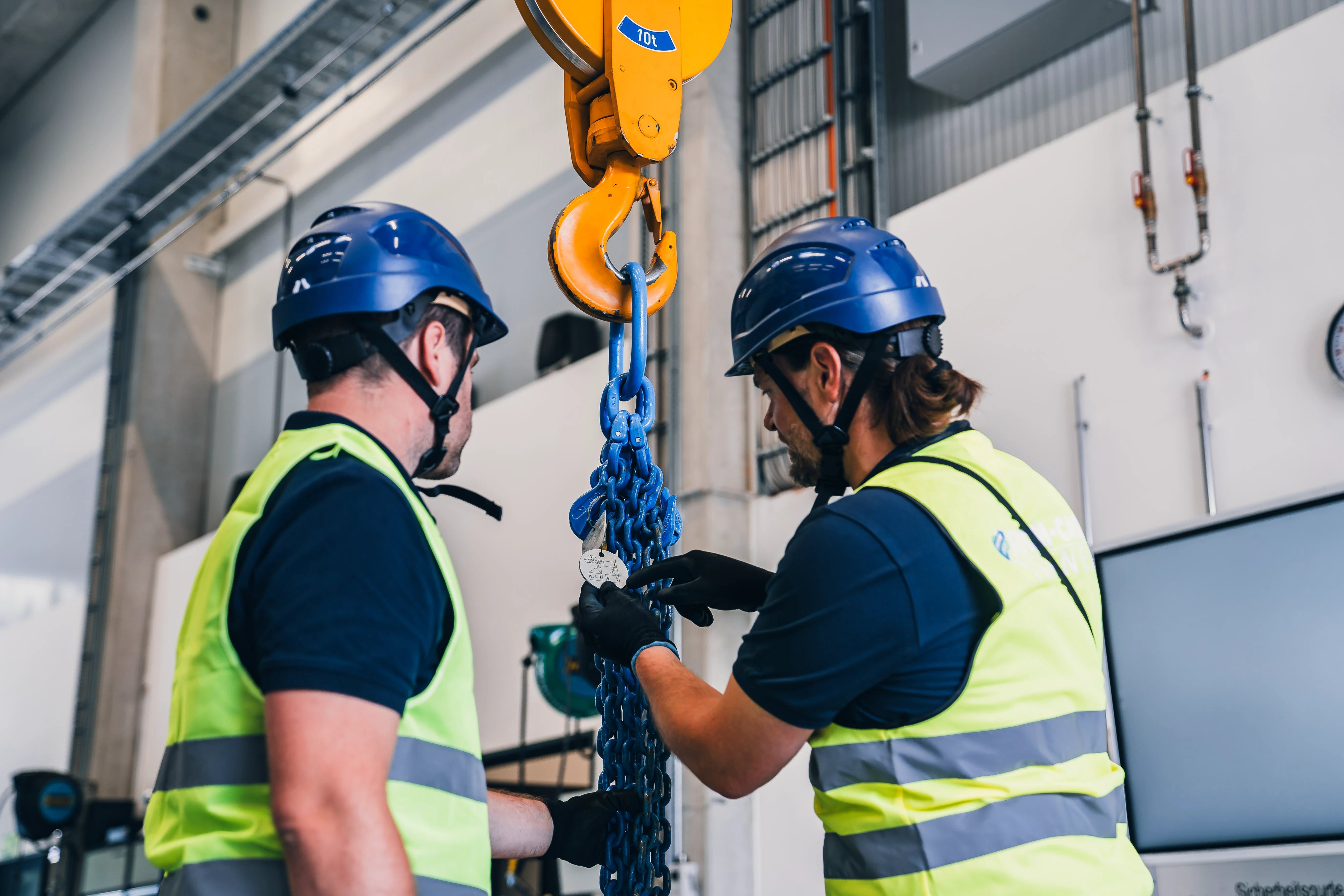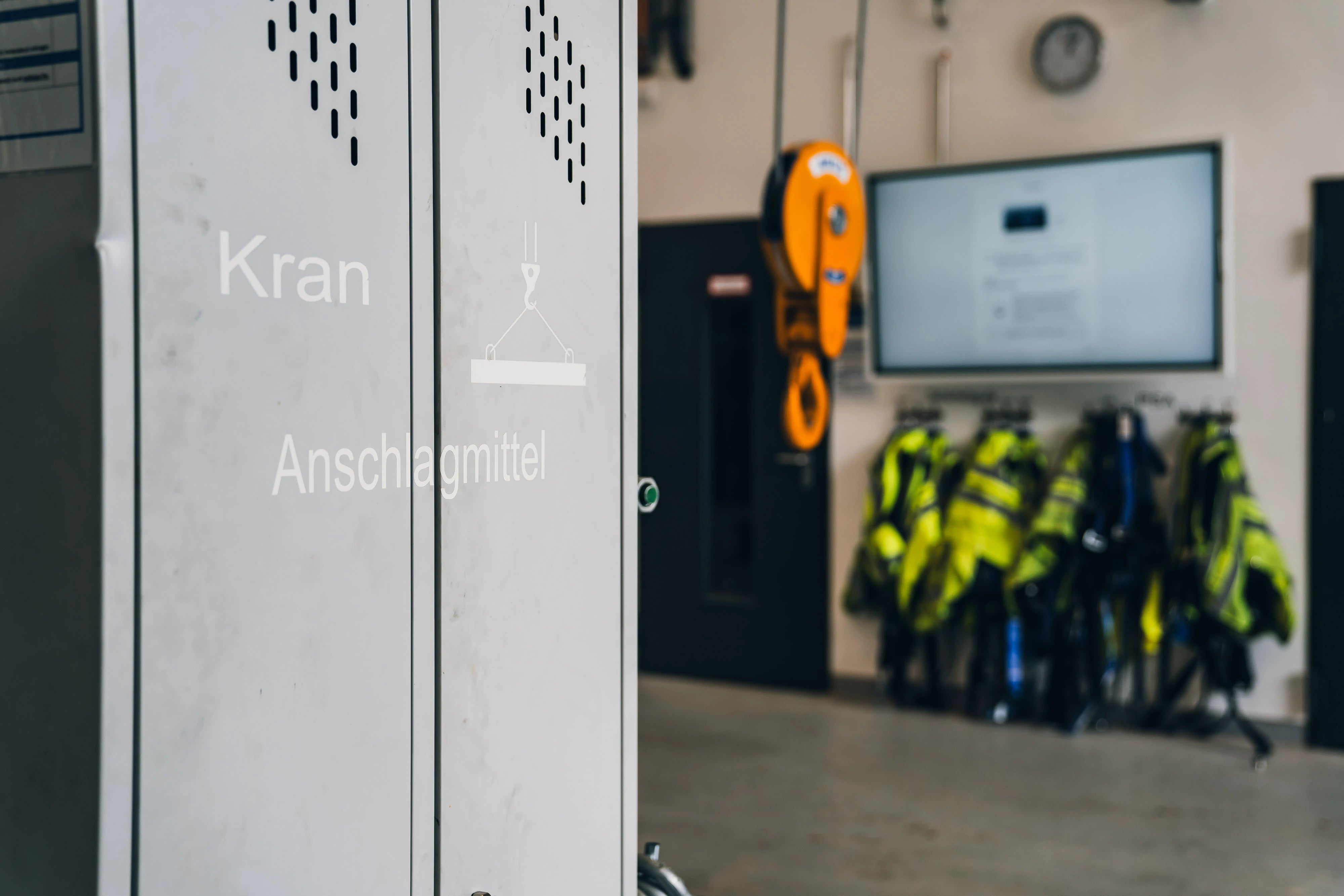That's why is worthwhile with us
Avoid liability
Strike correctly, prevent damage
Increase the level of safety in the workplace
Law & responsibility when slinging loads
Technical fundamentals & physical understanding
Practical experience for safe everyday lifting
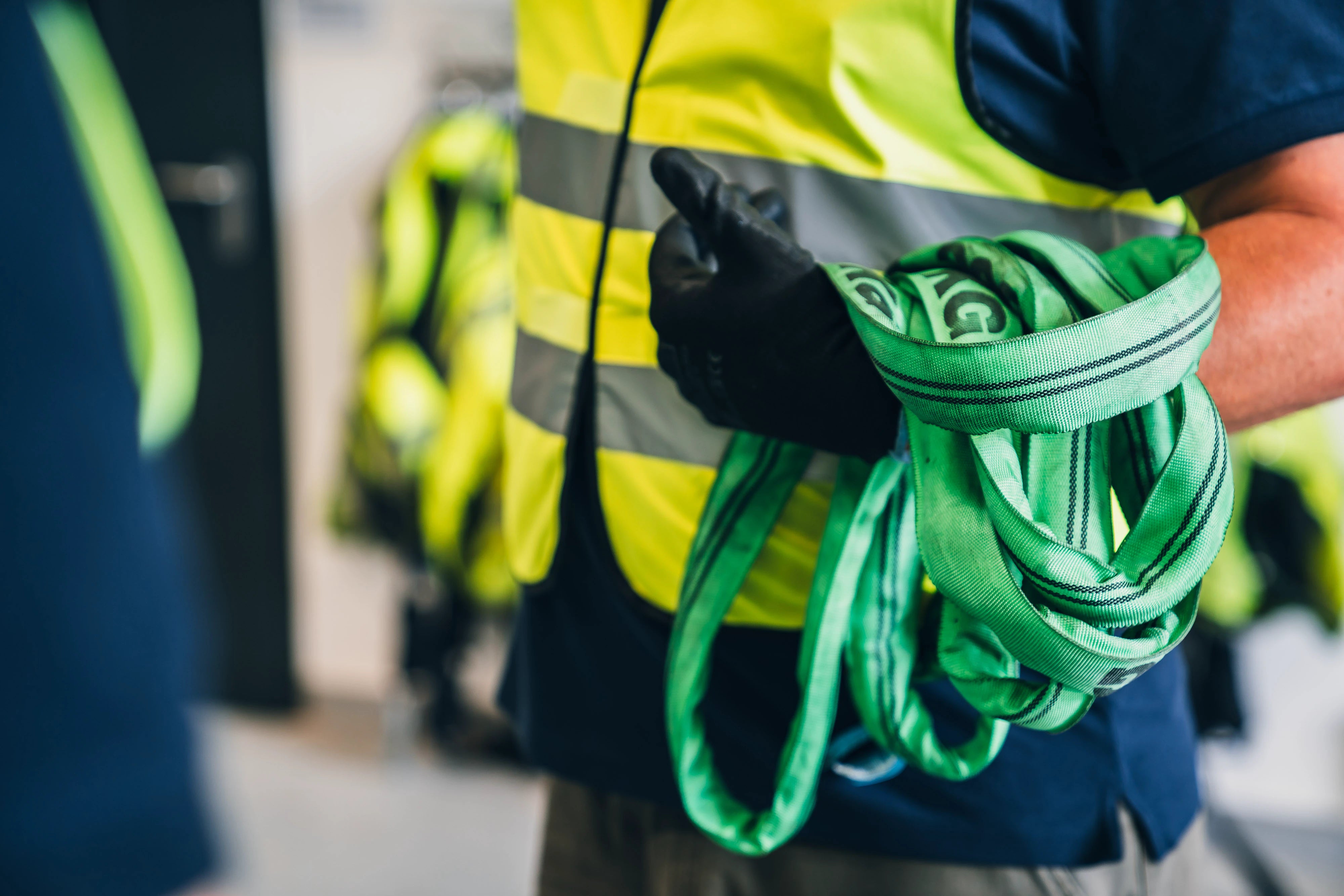
Professional training for slinging loads
Hier buchst du die Schulung
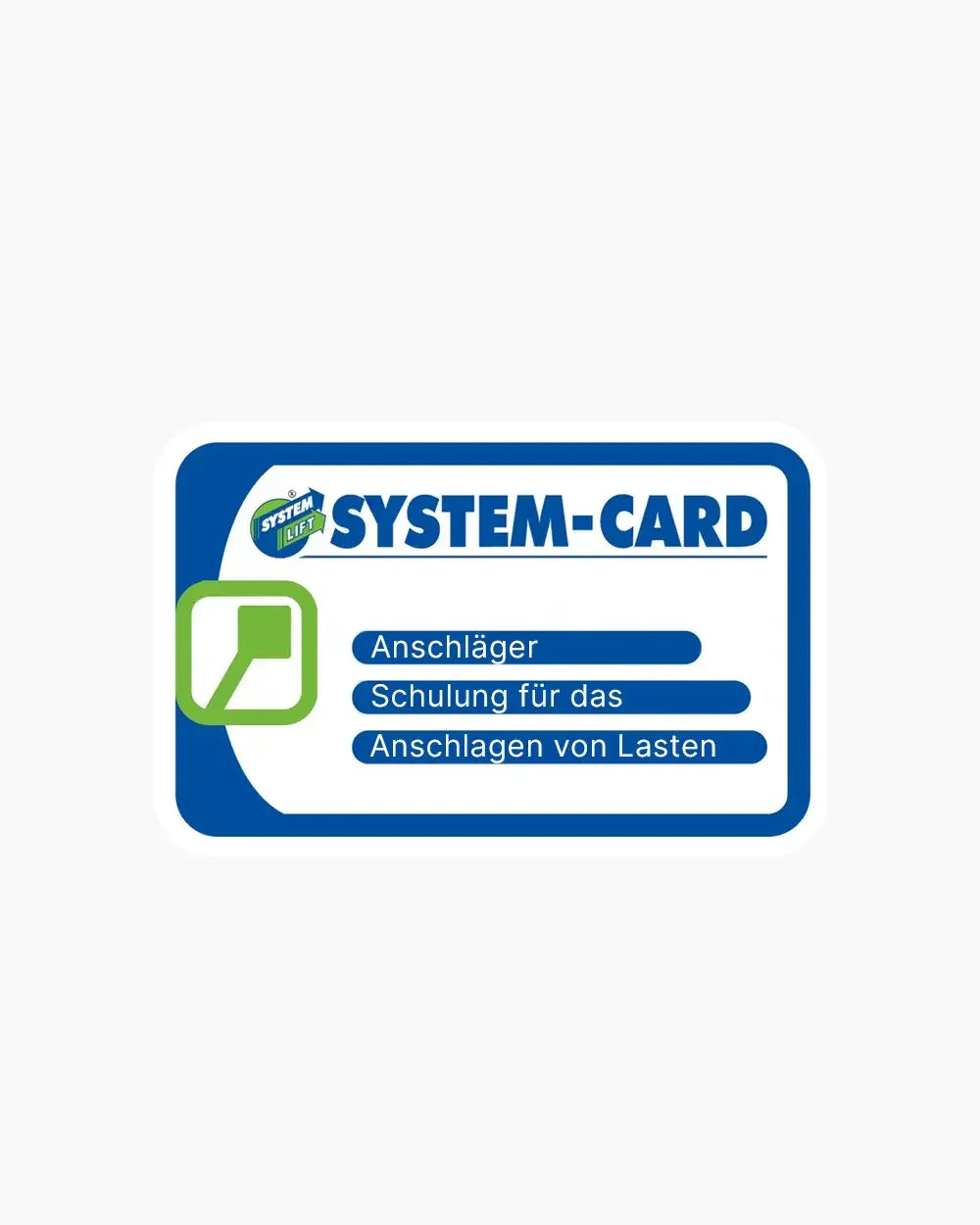
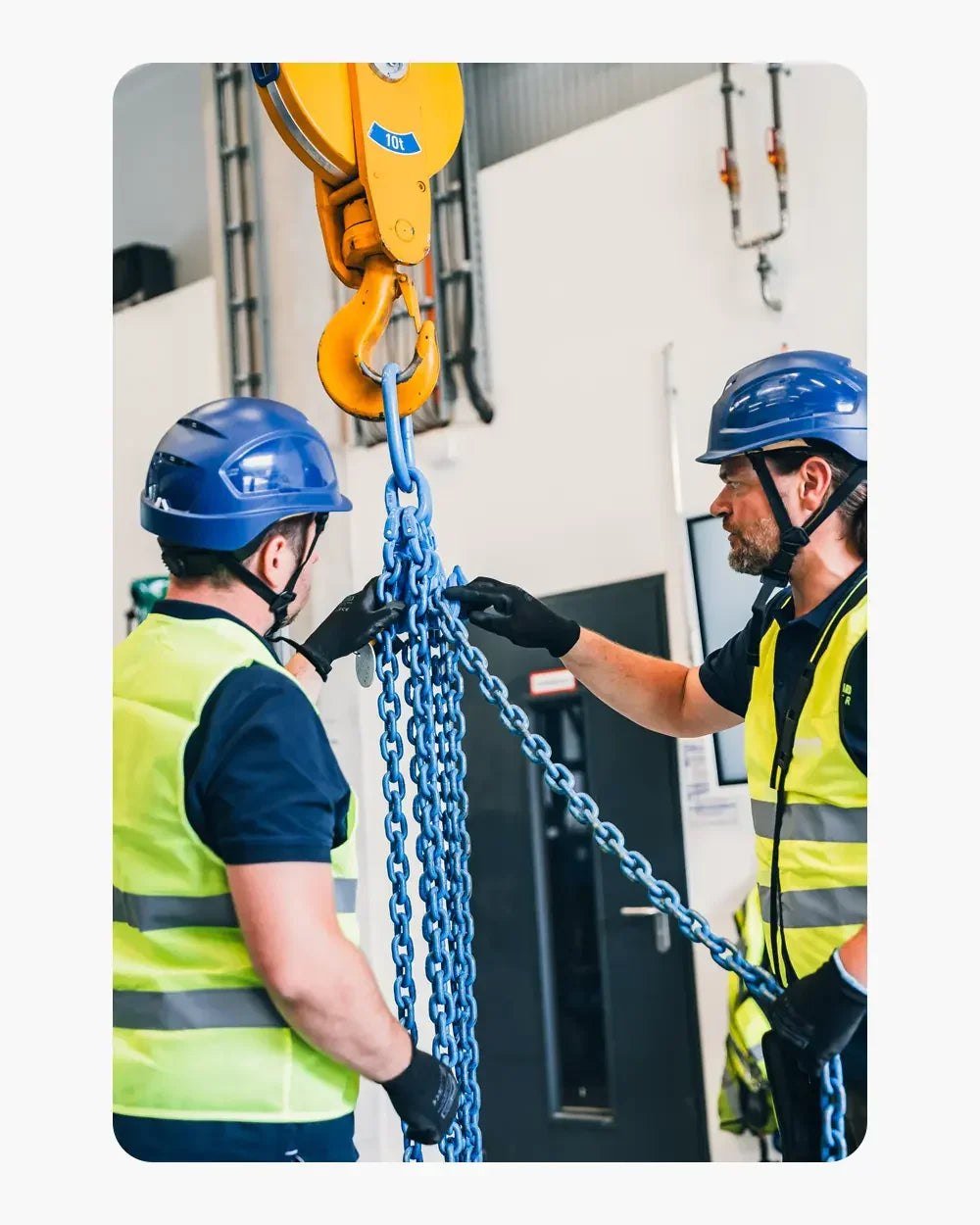
SYSTEM-CARD slinger – Securely attach loads.
Practical training for correct rigging, selection of rigging equipment & safe lifting with cranes, forklifts & lifting devices.
With examination and recognized qualification.
- Securely and without damage attach loads
- Correctly assess load capacity, angles & anchor points
- DGUV-compliant qualification – valid for construction, industry & assembly
plus €38.50 certification fee per participant for SYSTEM-CARD documents and ID card.
SYSTEM-CARD® slinger training requests
FAQ about SYSTEM-CARD® slinger training
What is the difference between lifting gear and load handling equipment?
Is an eyebolt a load-bearing device?
What load handling devices are there?
What information must be present on a load-handling device?
When do load handling devices need to be inspected?
Is a crane hook a load-carrying device?
What angle of inclination must not be exceeded when attaching loads?
Who is allowed to attach loads in the company?
Does a load handling device require a CE marking?
Is a pallet a load-handling device?
Are pallet boxes a load-carrying device?
What are the 10 vital rules for slinging loads?
What are loose load handling devices?
Is slinger training mandatory?
Which load handling device is form-fitting?
What is a slinger?
Weitere SYSTEM-CARD® Schulungen
Whether you work at heights, safely secure loads, or drive vehicles – SYSTEM-CARD® training courses provide you with exactly the knowledge you need for your everyday work.


